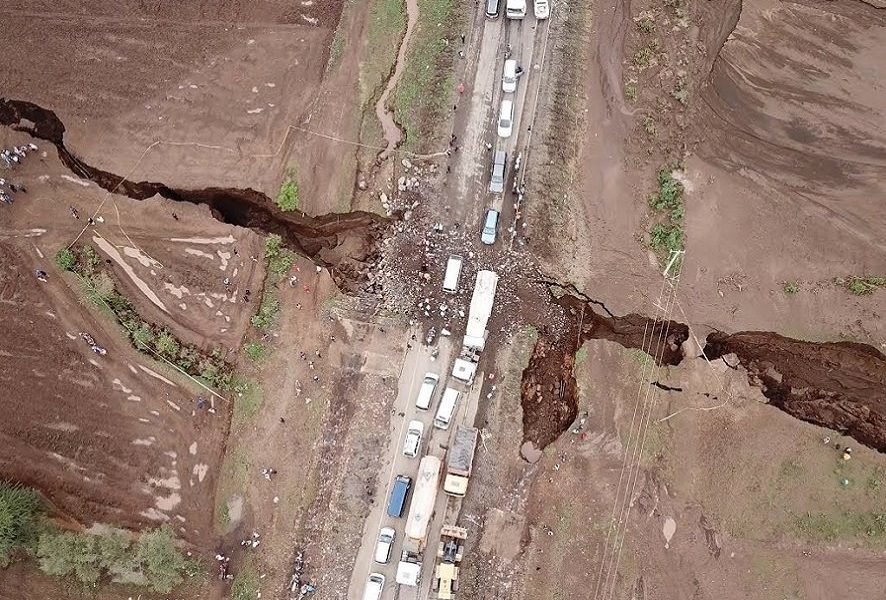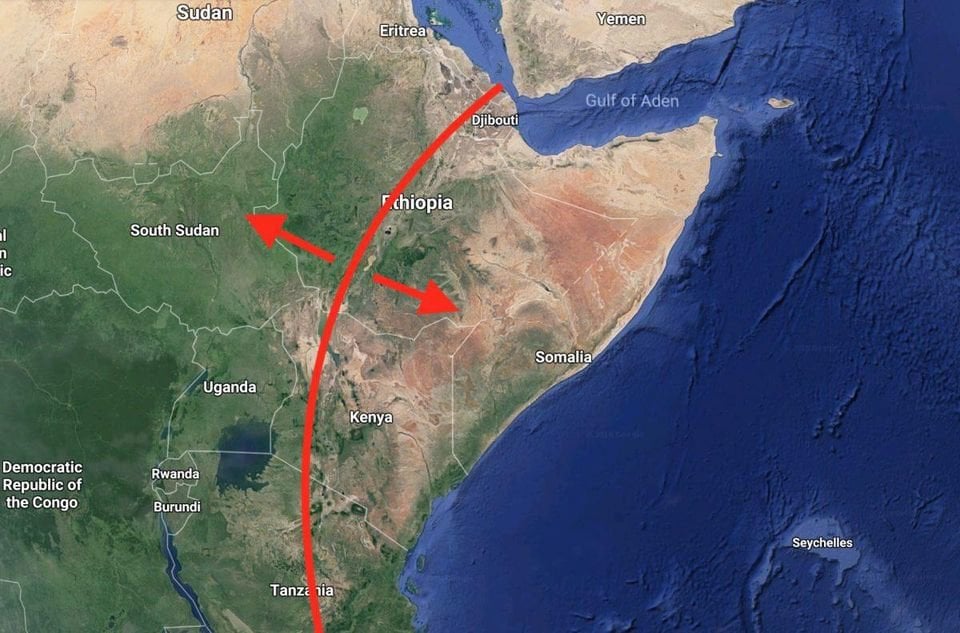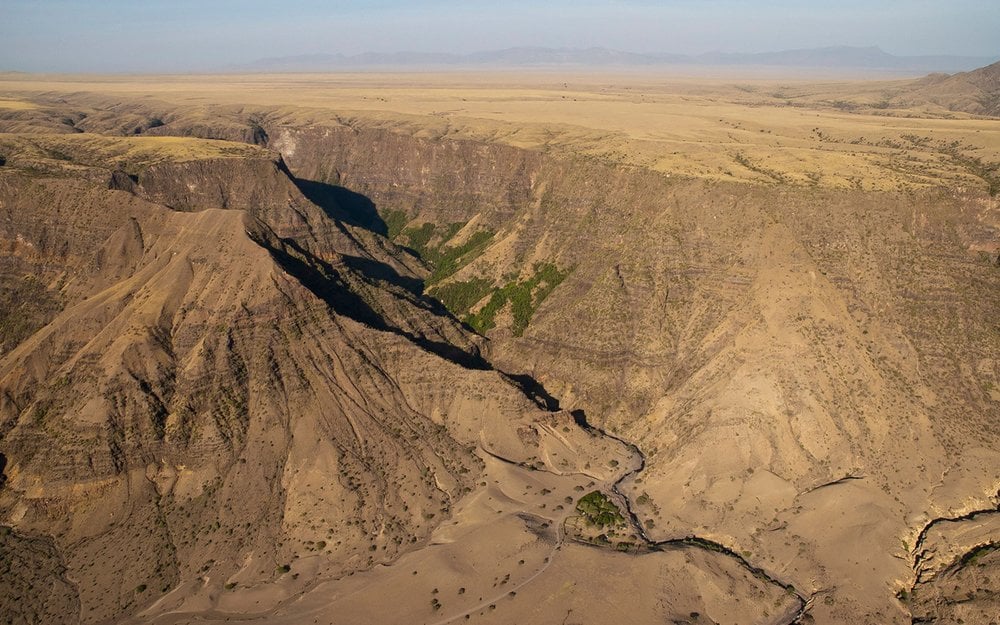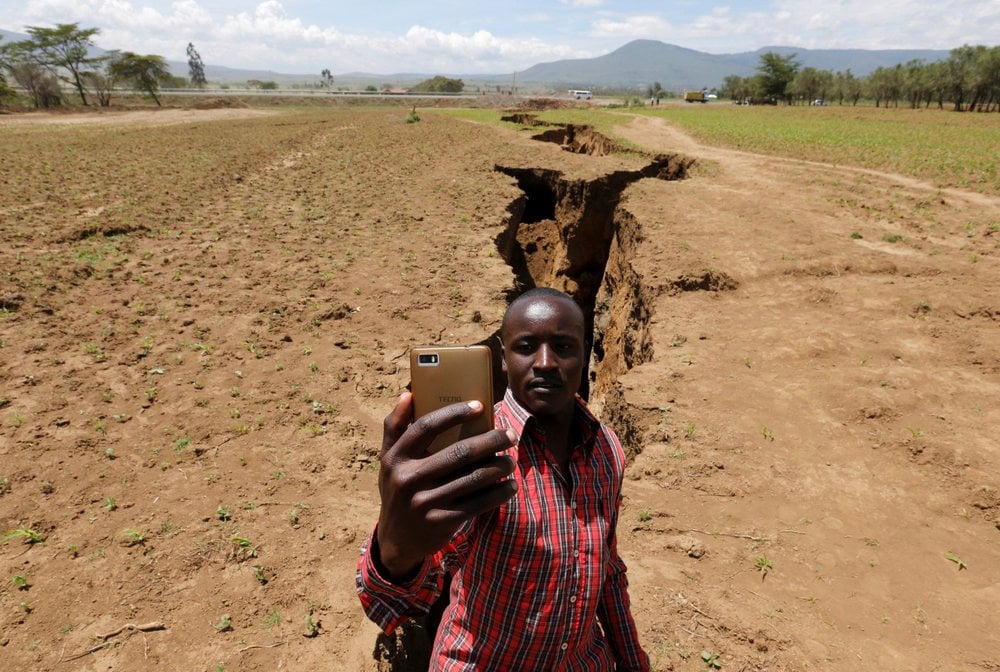
Rifting Actions Could See Africa Split into Two!

Recent happenings in Kenya has geologists from all over the world excited. A massive crack recently appeared in the area along the rift valley fault lines. This phenomenon has prompted a new discussion about the possible break-up of the large continent into two.
The rains have continually led to the crack becoming more prominent in terms of relative size and depth. At present, the crack runs for about a kilometer. The area where the crack occurred lies in Kenya’s Narok County.

Geologists were able to show a primordial gas trapped in the mantle, neon 22 and similar ratios of helium existed in plateaus. Thus, this helped prove a common superplume
Geologists have hypothesized that the crack could have something to do with the regional zones of weakness. Should the crack continue, it is expected that Africa may soon break up completely into two. The underlying forces beneath the earth are responsible for the crack appearing on the earth’s surface. A superheated plume is what geologists have posited as the likely culprit behind the new turn of events.
As for the safety concerns of residents, they can at least take solace in the fact that for a complete split to occur, millions of years will have to pass. After that, the crust is expected to thin out; sink and a seaway will emerge.
Been There
While the development of the crack in Africa is definitely news, it’s not the first time this has happened. For the Atlantic Ocean to have been formed, events such as this preceded the partition.
By looking closely at how the African and South American maps fit together, one can notice a sort of jigsaw fit. Reason? Because they were once one land mass. They were eventually undone by the emergence of the Mid-Atlantic Ridge.
In fact, the entire world was once one piece called Pangea. In the case of Africa, numerous scholars have come to the fore in trying to explain the recent phenomenon. However, no definite reason has been held as a true account of events as they happened.
New Evidence

The African superplume will provide scientists with easier access to study the earth’s inner workings
While scholars have opined plenty about the matter, there’s emergent evidence that is bound to quash any doubts about the true cause of the split. There’s new evidence about a superplume upwelling on the eastern edge of Africa. This superplume is responsible for the drilling of a hole deep into the Earth’s crust.
The superplume is regarded as being solely responsible for the emergence of the East African System (EARS). Scholars propose that this system is the reason why the African continent broke up. The East African Rift Valley, which stretches more than 3,00o kilometers, was produced as an after effect of the splitting of the African continent.
The superplume concept did not immediately become accepted as the gospel truth among geologists. It took years of research to be able to bring together the chemistry and physics aspects of the study. In the end, the studies were conclusive and they were able to ably point out the superplume as being responsible.
To prove the theory, a team of researchers landed in East Africa ventured out with gas masks to explore the rift. They made their way to volcano tops in Tanzania and Ethiopia, geothermal vents, and depressions. All these are regions where deadly gases accumulated. Thus, they were able to draw sufficient gas and rock samples left after eruptions had occurred.
Time and Tides

Researchers are hard at work looking at just how much carbon the mantle in East Africa is releasing. They’re also looking at how old the carbon is and if it has been recycled from the surface through the eons. This data will be important in figuring just how long it takes for continents to form—and split
Notably, the East African Rift Valley runs from the Gulf of Aden to Zimbabwe. The rifting process occurred some 25 million years ago. For the entire rifting to achieve fruition, it is expected to take millions of years given the slow rate of the splitting of a couple of millimeters per year.
It is important to note that the rifting process has been continually developing all through the years. Thus, the crack only became apparent once heavy rains hit the region. On the surface, the rifting process leads to seismic activity, volcanism, the creation of cracks and fissures and the uplift and subsidence of the ground.
With the passage of time, a small and shallow sea is expected to emerge along the lines where the crack currently is. This sea will continually grow in stature and create an island of nations lying in the Indian Ocean. The constituent countries in this island will be Ethiopia, Kenya, Somalia, and Tanzania.
More in Business
-
Ashton Kutcher’s Lucrative Business Ventures
Ashton Kutcher, a name that resonates with the silver screen’s allure, has emerged as a master of diverse talents, not confined...
December 8, 2023 -
Why American Consumers Are Falling Behind on COVID-Era Debt
When the world was grappling with the health crisis brought on by COVID-19, the U.S. economy faced an equally formidable challenge:...
November 27, 2023 -
Dr Dre and Ex-Wife Nicole Young Finalise $100m Divorce Settlement
After months of legal proceedings, Dr Dre, the legendary rapper, producer, and businessman, officially brought his tumultuous divorce from ex-wife Nicole...
November 22, 2023 -
5 Tell-Tale Signs That It Is Time to Say Goodbye to Your Current Job
Are you feeling like your job is more like a ball and chain than a fulfilling career? The daily grind, the...
November 19, 2023 -
WWE Signs $1.4 Billion Broadcasting Contract for SmackDown
In an explosive turn of events, World Wrestling Entertainment (WWE) has just unleashed some earth-shattering news for its legions of fans....
November 9, 2023 -
Navigating the Mortgage Maze as Interest Rates Take a Historic Leap
The U.S. housing market is nothing short of a dynamic entity. It evolves, reacts, and sometimes, just like the current real-estate...
November 3, 2023 -
Celebrity Couples Where the Woman Has a Higher Net Worth
In a world where gender roles and financial dynamics constantly shift, it’s not unusual to find celebrity couples where the woman...
October 27, 2023 -
Why the Gender Pay Gap Could Be Worsening
Picture this: Two college students, Alex and Charlie. Both are bright, have the same interests, and are ready to embrace the...
October 19, 2023 -
JC Penney’s Remarkable $1 Billion Revival Plan
In a remarkable turnaround, JC Penney unveiled a bold $1 billion revival plan, breathing new life into a brand that faced...
October 12, 2023















You must be logged in to post a comment Login